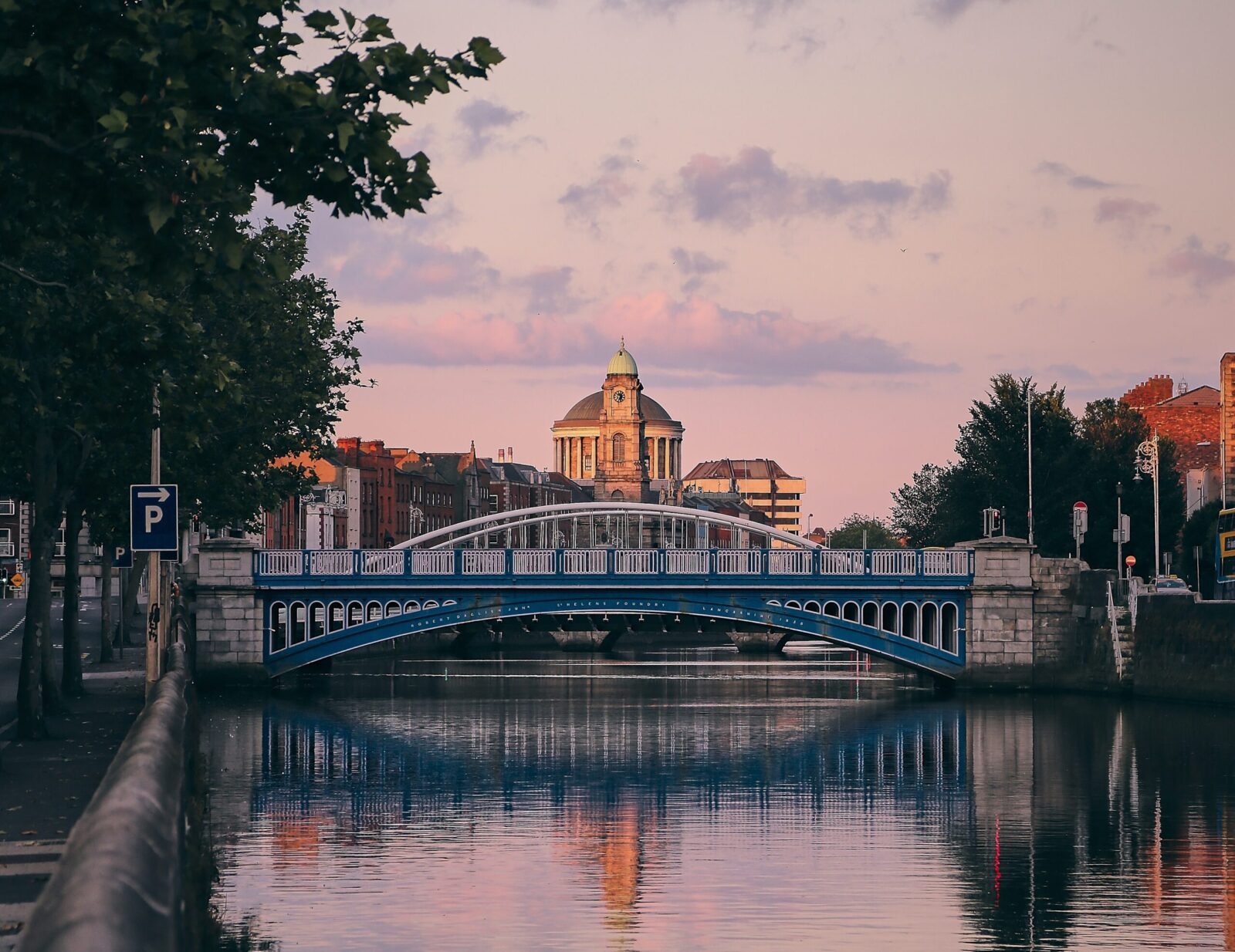Introduction
Ireland’s infrastructure is at a crossroads. From congested transport systems to water and wastewater management and treatment, and energy networks struggling with demand, the country faces a critical challenge. Outdated assets are holding back progress. At Waltero, we’ve seen how these bottlenecks limit not only national growth but also innovation for utilities, manufacturers, and technology providers.
In this article, we’ll explore the core infrastructure challenges facing water and energy, the pressures on Ireland’s grid, and how modernization strategies—supported by intelligent solutions—can create a smarter, more resilient future.
A Turning Point for Ireland’s Infrastructure
The Irish government has recognized the water & energy infrastructure shortfall it faces. Billions are being directed toward infrastructure modernization, and new policies are reshaping how projects are planned and delivered.
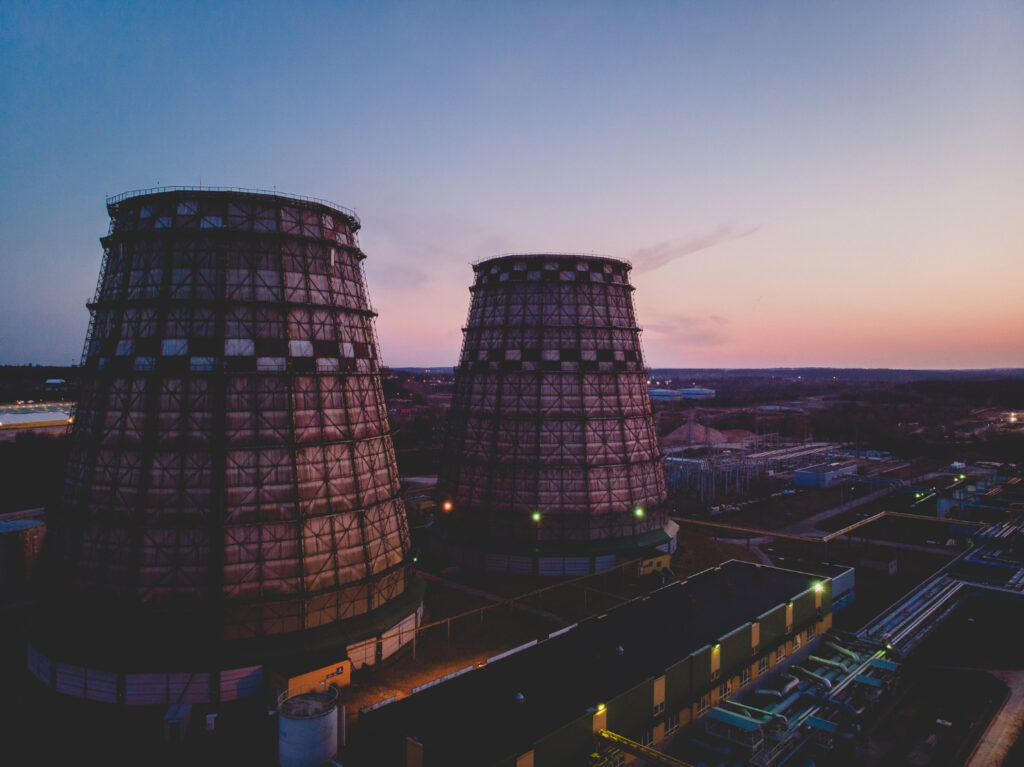
But investment alone won’t solve the problem, there needs to be smart management, technology integration, effective asset monitoring, and near real-time insights are essential to ensure grid reliability and sustainable growth.
Ireland’s Infrastructure Challenges
A Growing Gap Between Demand and Supply
Ireland’s population and economy have grown rapidly in the past two decades. A thriving tech sector, population growth, and foreign investment have all increased the country’s infrastructure needs. Yet infrastructure investment hasn’t kept pace, which has crippled the infrastructure delivery powers.
According to the Irish Fiscal Advisory Council, infrastructure shortages are among the most severe in the EU. Compared to peer nations, Ireland spends less per capita on infrastructure. This underinvestment leaves roads, hospitals, housing, water networks, and power grids under strain. For example:
- Traffic congestion in urban centers has become a daily obstacle for businesses and citizens alike.
- Hospitals struggle with capacity issues that infrastructure delays only worsen.
- Housing shortages continue to escalate, raising social and economic concerns.
The mismatch between demand and supply has created structural weaknesses that ripple across the economy.
Legal and Delivery Roadblocks
Even when funding is available, delivery delays often slow progress. Planning challenges and legal objections frequently stall projects for years. This uncertainty makes it difficult for private investors and utilities to plan effectively.
In response, the Irish government recently announced reforms that would raise the bar for legal challenges against major infrastructure projects, under Prime Minister Micheal Martin. The goal is to remove unnecessary obstacles and speed up critical investments. While this is a welcome step, regulations alone won’t solve everything. Real efficiency will come from combining regulatory reform with modern project management and digital planning tools.
The Utility & Grid Reliability Problem
Perhaps the most pressing challenge lies within Ireland’s electricity grid. Power demand has surged, driven by the growth of hyperscale data centers, renewable energy integration, and the electrification of transport.
This surge exposes a dangerous reality, grid reliability is under threat. Outages or delays in adding capacity risk not only the competitiveness of Ireland’s digital economy but also the stability of daily life. For a country marketing itself as a hub for technology and sustainability, these risks are profound.
In short, aging infrastructure, slow delivery processes, and increasing demand have created a perfect storm that requires urgent modernization for effective resource management.
Why Aging Infrastructure Puts Ireland at Risk
Aging infrastructure puts Ireland at serious risk by driving up maintenance costs, reducing reliability, and straining essential services. Outdated systems make it harder to integrate renewables or support electrification, undermining both resilience and sustainability goals.

Without modernization, inefficiencies will continue to erode long-term economic and environmental progress.
Outdated Utility Assets
Many of Ireland’s energy and water systems were designed decades ago, long before today’s digital-first, electrified economy. These assets weren’t built to handle modern levels of demand or integration of renewable sources. As a result, utilities are often compelled to extend the lifespan of equipment beyond its intended lifecycle.
The consequences of an aging infrastructure are significant:
- Higher operating costs from constant maintenance.
- Reduced efficiency that limits sustainability goals.
- Greater vulnerability to outages that disrupt homes, industries, and critical services.
Water Infrastructure and Environmental Pressures
Ireland’s water systems are facing mounting stress from multiple directions. Many rivers are polluted with waste from agriculture, industry, and sewage, leaving nearly half of them in poor environmental health. The situation extends beyond rivers—almost half of all surface water in streams, lakes, wetlands, bays, and seas falls below the EU’s expected standards. This not only threatens ecosystems of plants and animals but also risks the long-term safety of Ireland’s drinking water supply.
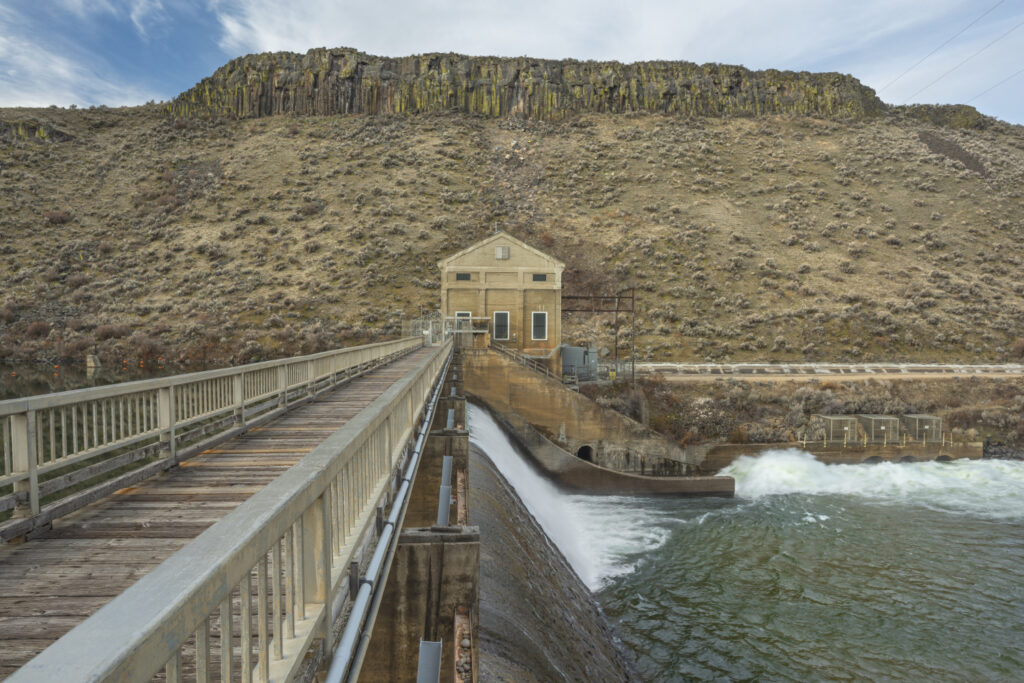
Compounding the issue, leaks from outdated and poorly maintained water infrastructure are a significant challenge. Roughly 37% of treated water is lost before it reaches household taps. The result is wasted resources, unnecessary costs, and growing water shortages. Tackling this requires sustained investment in maintenance, repair, and modernization of the water network.
At the same time, climate change is intensifying flood risks across the country. Urbanization and land-use changes have weakened nature’s ability to absorb water, increasing the likelihood of severe flooding events. Ireland will need proactive strategies such as building stronger flood defenses, implementing sustainable urban planning, and restoring natural floodplains to mitigate the risks and protect both communities and infrastructure.
The Hidden Cost of Delay
Modernization is often delayed because of budget constraints, lengthy approvals, or political debate. But postponing investment creates hidden costs. Every year that infrastructure remains outdated means:
- More short-term patchwork repairs that fail to address root issues.
- More service interruptions for businesses and citizens.
- Higher eventual costs when replacement becomes unavoidable.
For manufacturers, utilities, and data centers, these delays mean lost productivity and increased risk of downtime, eroding competitiveness in an increasingly digital world.
The Digital Divide
Globally, countries are racing ahead with smart infrastructure strategies—deploying smart grids, IoT-enabled devices in utilities, remote asset monitoring solutions, and advanced asset management systems. These allow them to better integrate renewable energy, balance loads, and optimize performance.
Ireland, however, risks lagging behind. Without modernization, the nation will face mounting difficulties in integrating renewable sources like wind and solar into the grid, ensuring reliability as electrification expands across transport and industry, and attracting the kind of foreign investment that depends on secure, sustainable infrastructure.
Case in Point: Ireland’s Grid & the Hyperscaler Challenge
Ireland has become a global hub for hyperscale data centers. These facilities bring investment and jobs, but they also consume vast amounts of electricity. As reported by Latitude Media, this has put unprecedented strain on Ireland’s grid.
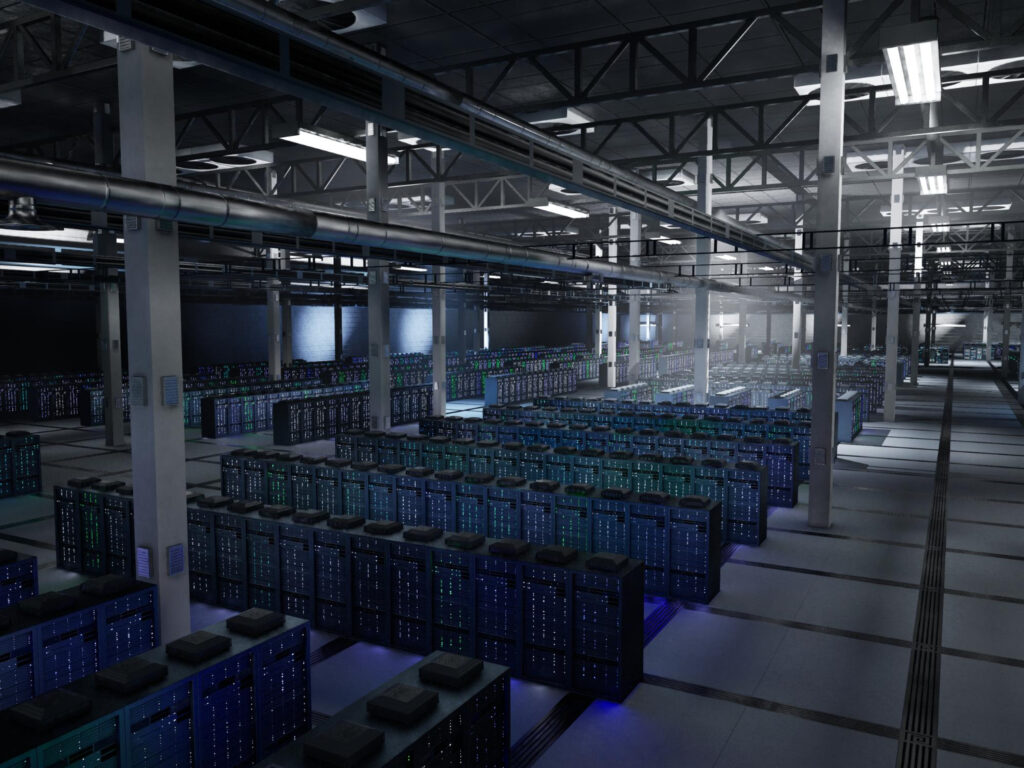
Without modernization, the grid risks:
- Capacity shortages that delay or block new projects.
- Reputational damage as Ireland struggles to meet its renewable targets.
- Power reliability issues that could deter future investment.
This is a clear example of why grid reliability and smart grid modernization are no longer optional—they are essential and need a revised national development plan.
At Waltero, we’ve seen how utilities can turn this challenge into an opportunity. With scheduled and near real-time monitoring, operators can forecast demand spikes, balance load distribution, and maintain uptime—even under extreme pressure. These aren’t theoretical solutions, they are proven approaches already transforming grids around the world.
The Role of Technology Partners for Infrastructure Development
Modernization isn’t just a government task—it’s an opportunity for utilities, manufacturers, and technology providers to transform the way they operate.
At Waltero, we believe modernization shouldn’t mean ripping out and replacing entire fleets of meters or committing to costly, disruptive overhauls. That’s why we developed the W-Sensor—an IoT-enabled, camera-based solution that retrofits directly onto existing meters and critical field assets.
Instead of replacing legacy infrastructure, the W-Sensor adds intelligence on top of practically any meter (water, gas, flow, electricity, etc), digitizing utilities in a scalable and cost-effective way. Besides, it can be installed in just a few minutes.
Waltero’s Technology Solution
The technology uses high-resolution image capture and computer vision to read analog and digital meters automatically, turning them into smart endpoints. Each reading comes with imagery proof, providing trustworthy, auditable data for billing, compliance, and dispute resolution. The W-Sensor can be configured for scheduled or near real-time updates, so utilities and manufacturers can align data capture with billing cycles, operational needs, or regulatory reporting—without the overhead of always-on data streaming.
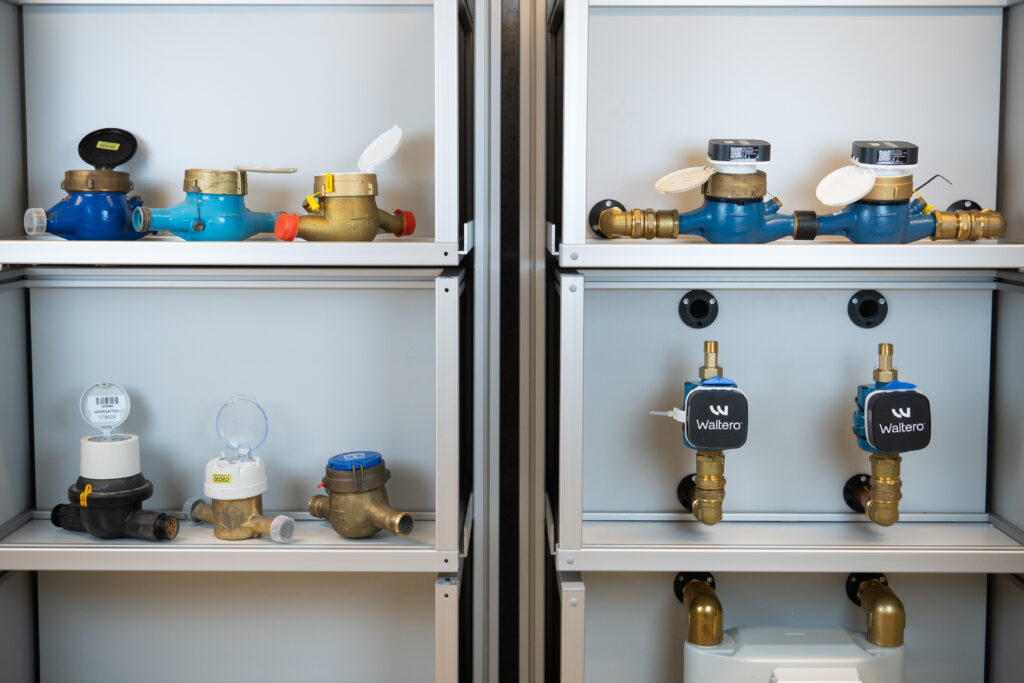
Beyond meter reading, the W-Sensor extends to remote asset monitoring. It can track valves, gauges, leak flags, indicator lights, or enclosure status at pump stations, substations, and plant rooms. This means fewer site visits, earlier detection of issues, and faster resolution when problems arise.
In tandem with the W-Sensor, our Mimir Cloud platform unlocks the real value of data by applying AI-driven analytics to the continuous stream of meter readings and asset insights. Mimir doesn’t just collect information—it learns from patterns over time, enabling predictive maintenance that helps utilities anticipate failures before they occur, optimize repair schedules, and allocate resources more efficiently.
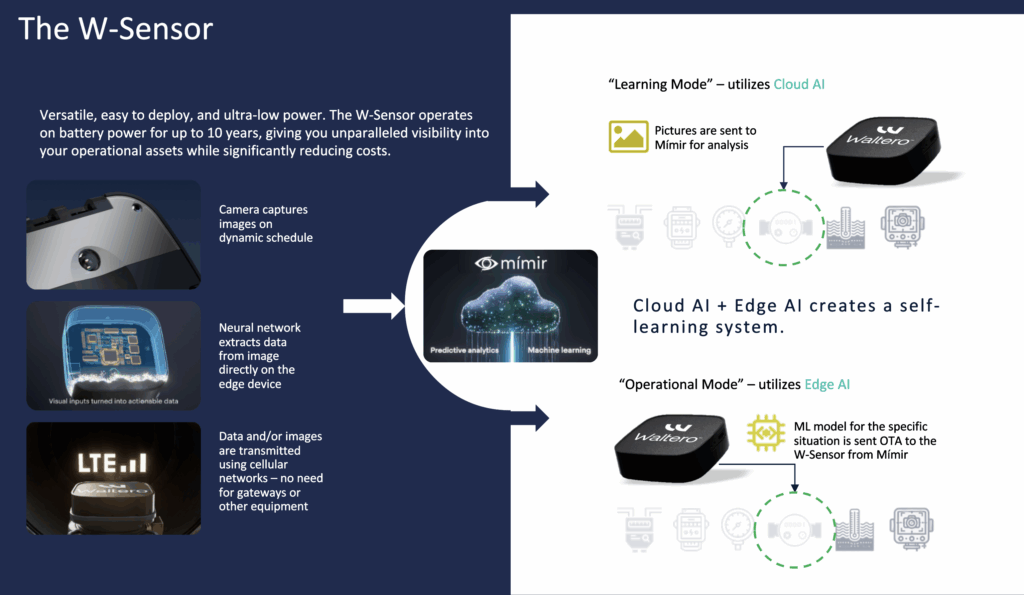
By combining edge intelligence in the field with Mimir’s cloud-based analytics, utilities gain a powerful end-to-end solution that enhances grid reliability, asset performance, and long-term sustainability.
By Deploying the W-Sensor, Utilities Can Benefit:
On our latest partnership, our remote asset monitoring solution with VA Syd, for water outlets helped reduce on-site inspections by 66%, saving both time and operational costs while improving system reliability.

We can provide Irish utilities and manufacturers with a practical way to move toward smart infrastructure and grid reliability—without waiting for expensive AMI replacements or disruptive large-scale rollouts, through:
- Cut operational costs: by reducing manual reads, truck rolls, and misreads.
- Improve grid reliability: with higher-frequency data that supports demand forecasting, leak detection, and outage response.
- Extend asset life: by enabling condition-based maintenance, focusing resources where early warning signs appear.
- Protect data with secure end-to-end encryption: All meter readings, images, and asset monitoring data are encrypted from capture to cloud, ensuring compliance and protecting sensitive utility and customer information against tampering or unauthorized access.
- Monitor high-value assets remotely: From valves, water outlets, and pumps to substations and plant equipment, utilities gain continuous visibility into critical infrastructure without costly site visits.
- Deliver accurate, transparent billing: Automated meter readings with photographic proof ensure customers are billed precisely for what they consume, reducing disputes and strengthening trust.
For organizations exploring what’s possible, our Exploratory Kit provides a low-risk, hands-on way to validate the technology in real-world environments before scaling. You can request your demo now.
The Path Forward: Infrastructure Modernization
So how can Ireland catch up and position itself for long-term resilience? At Waltero, we see four key modernization strategies.
1. Smart Infrastructure Planning
Effective modernization begins with planning that prioritizes scalability and flexibility. Digital tools such as IoT, Edge-AI, simulation models, and predictive analytics can allow policymakers and utilities to test different scenarios before breaking ground.
By embedding near real-time monitoring and forecasting tools, stakeholders can identify risks before they escalate and allocate resources more efficiently. Planning smart from the start reduces long-term costs and ensures assets are future-ready.
2. Grid Modernization & Reliability
Grid modernization is about far more than replacing old hardware. It requires embedding intelligence and automation into the very fabric of the grid.
Smart sensors, distributed monitoring systems, and scheduled near real-time insights enable utilities to:
- Detect faults before they become outages.
- Respond dynamically to surges in demand.
- Balance energy sources, including renewables, more effectively.
Predictive maintenance powered by edge AI can also extend asset life and reduce downtime—turning reliability from a constant challenge into a measurable advantage.
3. Smarter Project Delivery
Ireland’s growing problem of project delays shows that better infrastructure delivery is just as important as better design. This is where digital twin models, unified analytics, and collaborative platforms come into play.
By creating a digital replica of infrastructure projects, stakeholders can:
- Test scenarios before construction.
- Spot inefficiencies early.
- Improve transparency between the government, contractors, and the public.
- Have a customizable unified dashboard for analytics
This reduces disputes, accelerates timelines, and ultimately ensures Ireland gets more value from every euro invested.
4. Utility Asset Management
Not every asset can be replaced immediately, which makes smart asset management essential.
With advanced monitoring and analytics, utilities can:
- Track real-time performance across networks.
- Optimize maintenance schedules based on actual usage and condition.
- Prioritize upgrades for the most critical or at-risk assets.
This targeted approach ensures limited budgets deliver maximum reliability—a crucial factor in bridging the gap until full-scale modernization is achieved.
Conclusion
Ireland’s infrastructure challenges won’t be solved overnight. But by addressing aging infrastructure, embracing grid modernization, and adopting smart management strategies, the country can bridge the gap between demand and delivery.
At Waltero, we believe modernization is more than an upgrade—it’s the foundation for reliability, sustainability, and competitiveness in Ireland’s future.
The choice is simple, either to continue patching an outdated system or invest in smarter, more resilient infrastructure that will support Ireland’s growth for decades to come. The time to act is now.
Anders Carlberg – Co-Founder & Director of Customer Success, Waltero
Anders is a hands-on entrepreneur committed to solving customer challenges through Waltero’s AI and monitoring solutions. With extensive experience in IT services, he guides utilities worldwide in adopting data-driven strategies for operational excellence.
